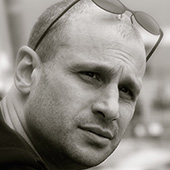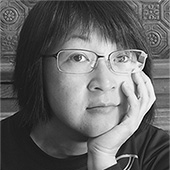Part of our role as UX designers is to facilitate people’s being the best they can be as individual contributors. Taking this further, our role is to be the conductor who is able to see and nurture moments, as people look beyond their own role to see how they can add to the overall project. To break down silos! We liken this to a quartet, in which each player works from the same piece of music, knows his or her own role, and has an instrument to play, but knows when to listen to the music director.
The Scenario
You have one month in which to plan and facilitate a design workshop for people you have not met before. The workshop participants come from various parts of an organization and have different levels of understanding about both what the workshop requires and what user experience is.
The Challenges
What are some challenges you may face before people even arrive for the design workshop?
- They are involved in lots of projects. People are busy and work on many projects. This means participants’ attention may be diverted, as they deal with timelines, email messages, and work deliverables.
- They don’t know you. If it’s the first time you’ve run a workshop with a particular group, this is probably the case. This means you’ll have to find ways to build rapport quickly.
- They don’t know each other. If people are coming from different parts of an organization, this is also probably true. People will be focused primarily on their own jobs and responsibilities.
- English may not be their first language. If people are coming from various parts of the world and your first language is English, you’ll need to adjust your approach to ensure clearer communication all around.
- There will be politics. Pre-existing, legacy political dynamics may exist that you’ll need to manage and possibly push against, in the early stages of the workshop, to focus people on your workshop goals and its deliverables. You must handle this carefully—though sometimes brutally—all at the same time.
- The room may not be ideal. If you haven’t booked the room yourself, it might not have all of the right elements to help you and participants do your best work.
Planning: The Rehearsal
So what do you need to plan and prepare? What must you instill in yourself, the participants, and even stakeholders who cannot attend the design workshop to help you create some magic together?
- your program—As you design your program, define not only the activities of the day, but the underlying goals you would like to achieve for each activity, including how you want people to feel. Each activity should bridge nicely to the next—not only in terms of their deliverables, but also as parts of the journey you and the workshop participants are taking together.
- yourself —Not everyone has the energy or the skillset to both facilitate and orchestrate a design workshop experience. Before stepping into the room and meeting the participants, you must both prepare yourself and envision how you’ll perform on the day of the workshop. What type of presence do you want to convey to help your participants create the right atmosphere and enable them to do their best work together?
- the room—You should speak to your project sponsor to understand what you’ll have available to work with. In previous workshops, we have been able to use multiple whiteboards and place flip charts around the room to help document stories, quotations, references, designs, and key moments, so by the end of the day, the available surfaces of the room were covered with people’s contributions, and they were surrounded by their collective output. This kind of setup makes it easy for one of us to take photos and capture everyone’s contributions as the design workshop progresses. And these photos form one part of our deliverable.
- the people—You need to form a deeper understanding of who will be participating, their work experience, whether they have been exposed to UX design before, the role they play on their team, and the benefit they propose to bring to the design workshop.
- the tempo—You need to understand what other commitments you have and how this impacts both your preparation and the facilitation you’ll need to do on the day of the workshop. Does it inspire you? Does it distract you? Are you able to open yourself to new learnings throughout the workshop, as your refine your facilitation skills?
- your partner—It’s challenging to be the only person bringing it all together. So, ideally, you’ll have some help. A partner can provide help distributing materials, offering perspectives, keeping you on time against your planned program, roaming the room to help small breakout teams with design problems, and generally, offering support.
- the rehearsal—If time allows, go in the day before to meet some of the people who will be attending the design workshop. Take this opportunity to share some knowledge and remove some of the mystery about who you are. Remember, people may not know what to expect, so might naturally be fearful about what you have planned. You may have only a limited amount of time to win their hearts and move them toward collectively doing great design work together.
- the deliverable—You should have a clear understanding of what you want to achieve on the day of the workshop. The workshop’s deliverable should be a beacon toward which you can focus participants’ efforts at every point during the design workshop, ensuring you stay on the correct course.

